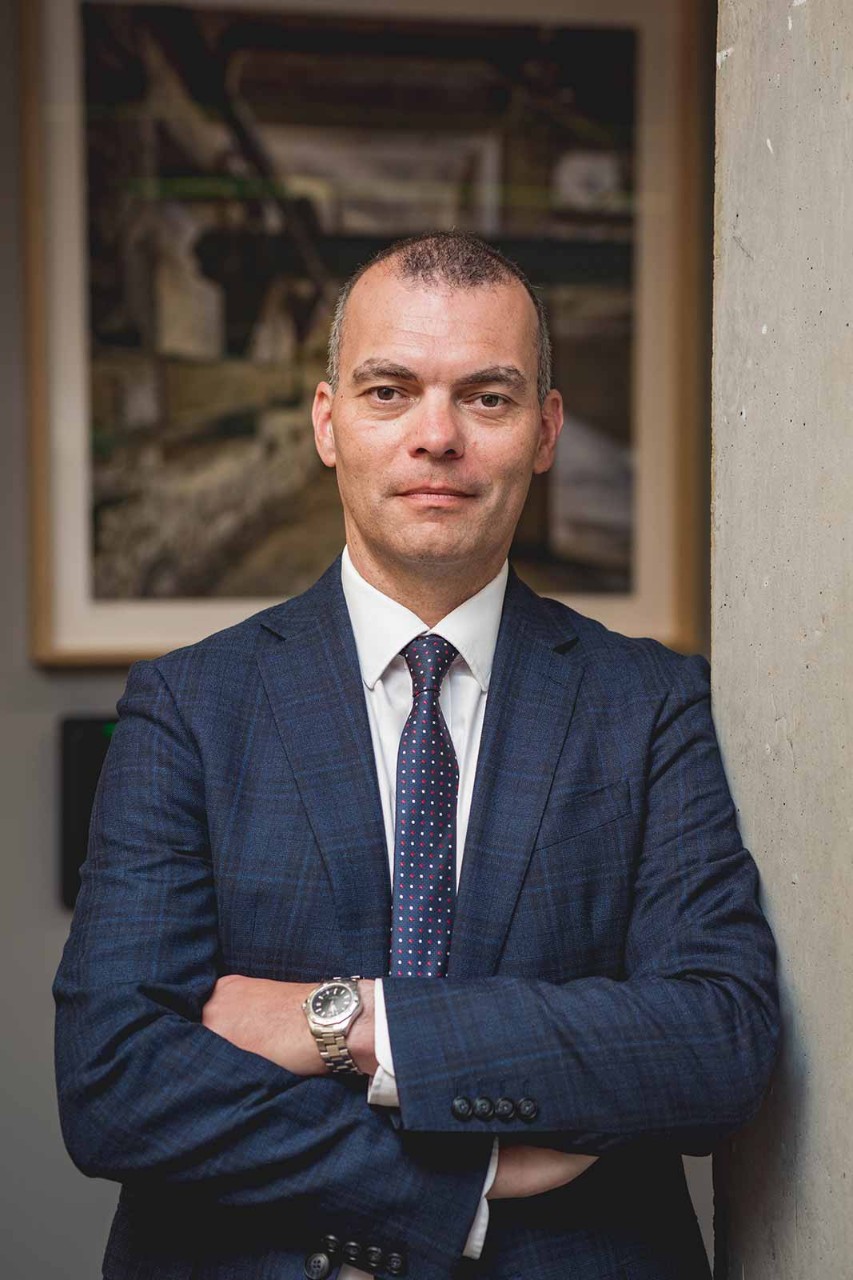
Ireland’s credit union (CU) movement epitomised a circular economy long before the term became fashionable, with its cooperative ethos of equality, mutual self-help and equity, and its pledge to serve communities with fair savings and loans – one paying for the other – with any profits invested back into operations and paid to members as dividends.
Yet the sector, which often tops consumer polls, had garnered a reputation for being a bit stagnant. That’s all changing says David Woodward FCCA, finance director at Savvi Credit Union in Dublin: ‘If it was a bit stagnant before, it’s certainly waking up and becoming more progressive.’
‘You wear a lot of hats when you’re in a credit union’
‘There are a lot of good things happening within the sector, as well as some challenges, especially felt by the smaller credit unions (CUs): the consolidation of the last few years and keeping up with regulations,’ he says. ‘There’s a lot of ongoing work around operational resilience, ESG, digitalisation, loan participation and sector-wide collaboration. You wear a lot of hats when you’re in a CU.’
Entrepreneurial drive
Woodward has an entrepreneurial drive from summers spent helping in his stepfather’s motor business, and listening to tales from his grandfather and great-grandfather about their shops in the UK going back to the early 1900s: Woodward’s High Class Tobacconist, Confectioner and News Agent.
‘When I came back from travelling in the early noughties, I had this entrepreneurial ambition; I had my ACCA exams and I had some experience in business from a stint at New Ireland Assurance. I felt ready,’ he recalls.
CV
2022
Finance director, Savvi Credit Union
2021
Non-executive director and vice chair, North Leinster Money Advice and Budgeting Service
2018
Finance operations manager, IPB Insurance
2017
Project manager – business change, Bank of Ireland
2011
Financial control manager, New Ireland Assurance
2009
Financial and management accountant, Bank of Ireland
2005
Franchise business owner, O’Briens Irish Sandwich Bar
2006
Investment accountant, New Ireland Assurance
He opened O’Briens Irish Sandwich Bar in Dawson Street in Dublin city centre in 2005 and quickly became familiar with the issues facing many small city-centre retailers: ever-increasing costs, minimum wage hikes and rising rents. ‘But people were spending money, so it was sustainable. It was a tough but rewarding gig.’
But at the end of 2009, after the financial crisis, Woodward decided to call it a day. ‘I should have called it sooner, but my doggedness and determination prevented me,’ he admits. ‘I was a little bit battered and bruised, and a bit lighter in the pocket, but I learned how to manage difficult and financially challenging situations.’

Sector in transition
Such experience, combined with his time at New Ireland Assurance, Bank of Ireland and IPB Insurance, equipped him to understand the needs and desires of CU members and the risks facing them, as well as to act as a steward for responsible finance, especially amid the push and pull of a sector in transition.
CUs in Ireland hold €20.87bn in assets, with loans to customers of €6.28bn and savings in the vicinity of €17.5bn, a 31% loan-to-asset ratio (LTA). ‘In the US the ratio is more like 70%, so by comparison Ireland’s CUs are under lent; there’s potential to loan a further €8bn, up to €14bn in total if Ireland were to match the US,’ says Woodward.
‘We’re certainly challenging the banks. In the 12 months to September 2023, loan books grew by 12% to €6.3bn, driven by personal lending but with mortgages and business loans playing an increasingly important role,’ he says. ‘The sector has also moved into current accounts and is further developing digital services, so there’s a lot going on.’
But for the sector to achieve US levels of performance, Woodward says there need to be changes to both the funding model and the regulations.
‘In Ireland we’re subject to a combined home and business lending concentration limit of no more than 15% of our total assets, while in the US it’s more like 50%. We also need to keep a minimum amount of liquidity available within 90 days, which can be up to 30% of unattached shares, further restricting loan book growth,’ he says.
The real breakthrough would be the formation of a credit union services organisation
On the funding side, CUs have traditionally relied on their members’ savings, but as the LTA ratio grows and loans have longer maturities, the asset/liability funding mismatch increases. Currently available alternative sources of funding, for example, fixed-term deposit accounts and current accounts, will only have a minor impact on this.
The real breakthrough would be the formation of a credit union services organisation, to provide niche services to CUs, and a corporate credit union (CCU) – ie a credit union for credit unions. Both of these appear to have been made possible within the revised Credit Union (Amendment) Act 2023.
Ireland’s credit unions in numbers
192
Number of credit unions in Ireland
3.6m+
Number of members
€20.87bn
Assets held by Ireland’s credit unions
€6.28bn
Amount loaned out by credit unions
12%
Growth in loans in the past 12 months
€17.46bn
Savings held by credit unions
‘A CCU would be able to transfer funds within the CU network to cater to peaks and troughs in loans and savings demand, thereby reducing individual CUs’ reliance on their own liquidity. Essentially, this would be a pooling of a proportion of all CU resources in the CCU that would provide liquidity and treasury management services to the individual unions,’ Woodward explains.
In an effort to address the sectoral structure, between 2013 and 2017 the Credit Union Restructuring Board oversaw 82 merger projects of 156 CUs with assets totalling €6.7bn, approximately 40% of the sector at the time.
‘For some people, the burden of debt can be overwhelming and impact their physical and mental health’
And sector consolidation continues at pace. As of September 2023, there were 192 trading CUs, down from 205 the previous year and 252 in 2018. The number with assets of at least €100m increased from 54 in 2018 (57% of total sector assets) to 66 last year, (70%). From 2018 to 2023, the number with assets of less than €40m fell from 117 (14% of total sector assets), to 52 (6%).
This transformation has not come at the expense of the founding ethos, Woodward notes. ‘We’re putting it up to the banks in terms of our digital offering, our services, the competitiveness of our rates, but also the human touch in taking the extra time to review somebody’s financial position to see if it’s suitable to lend to them.’
Improving financial literacy
Woodward takes this last point seriously, so much so that he volunteers as a non-executive director and vice chair at the Money Advice and Budgeting Service, a government-funded organisation that provides free, independent, confidential and non-judgmental money advice.
‘As a board member I work on risk, compliance, HR, audits, work plans and staffing, but it’s the success stories that I love to hear: families, husbands, wives, mothers, fathers thanking us. For some people, the burden of debt can be overwhelming and impact their physical and mental health,’ he says.
‘People should enter into financial arrangements with their eyes wide open and fully informed of what they’re agreeing to,’ he says. ‘Responsible borrowing is as important as responsible lending.’



